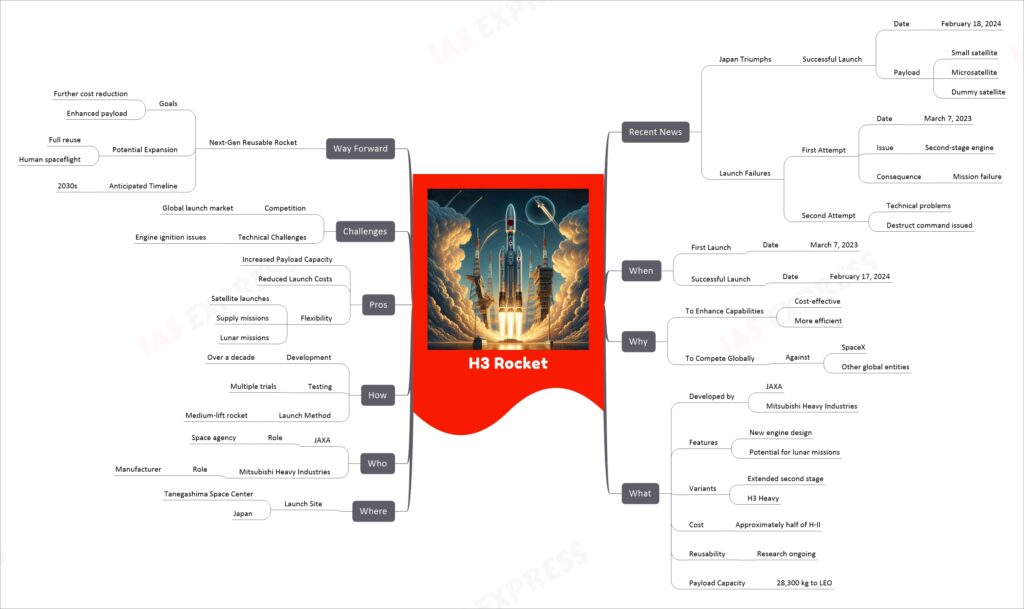H3 Rocket

The H3 rocket, developed by JAXA and Mitsubishi Heavy Industries, is Japan’s latest advancement in space technology. Its development spanned over a decade, facing challenges including a failed first launch in March 2023 due to second-stage engine issues, and a subsequent failed attempt. However, it achieved success on February 18, 2024, launching a small satellite, a microsatellite, and a dummy satellite. This rocket is designed for efficiency and cost-effectiveness, aiming to halve the launch costs compared to its predecessor, the H-II rocket. The H3 is flexible, capable of launching satellites, supplying space stations, and supporting lunar missions. Future plans include developing a next-generation reusable rocket as part of Japan’s space policy, aimed at further reducing costs, increasing payload capacity, and potentially supporting human spaceflight by the 2030s.
If you like this post, please share your feedback in the comments section below so that we will upload more posts like this.

